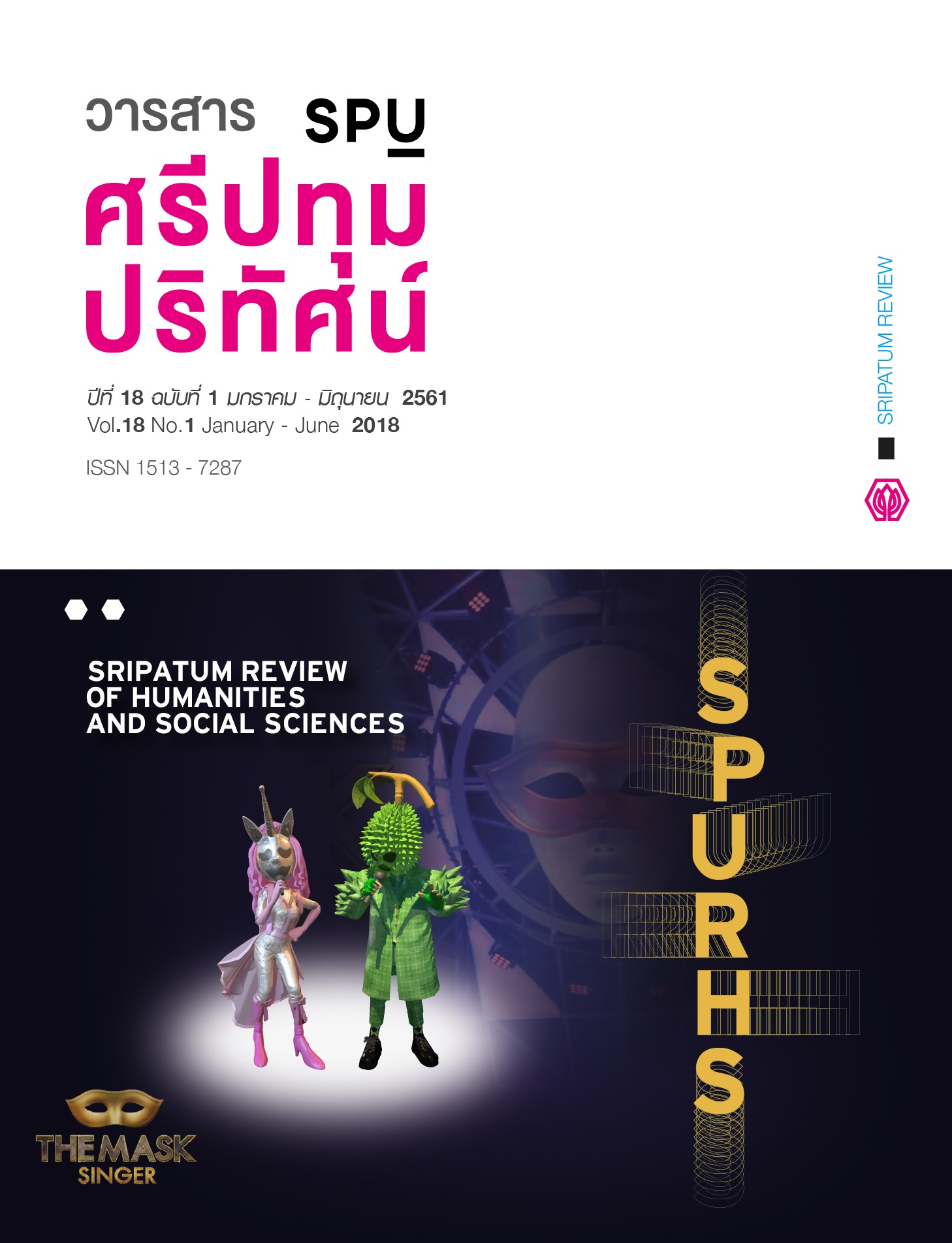A DEVELOPMENT OF TEACHING MODEL FOR MATHEMATICAL COMPETENCIES BASED ON GARDNER’ S MULTIPLE INTELLIGENCE THEORY
Main Article Content
Abstract
This research aims to: (1) study the context of the needs for enhancing mathematical competencies of undergraduates; (2) develop a learning management model for enhancing mathematical competencies based on Gardner’s multiple intelligence theory; (3) evaluate the use of the developed learning management model for enhancing mathematical competencies based on Gardner’s multiple intelligence theory by (3.1) comparing mathematical competencies of students who learned under the learning management model for enhancing mathematical competencies based on Gardner’s multiple intelligence theory with that of students who learned under conventional teaching method; and (3.2) comparing the pre-learning mathematical competencies with the post-learning counterpart competencies of the students who learned under the learning management model for enhancing mathematical competencies based on Gardner’s multiple intelligence theory. The target group consisted of 90 third year and fourth year students of Maha Sarakham Rajabhat University during the first semester of academic year 2016. The employed research instruments were a test on mathematical competencies which was an essay test containing 10 test items, a scale to assess eight elements of multiple intelligence, and a semi-structured interview form. Statistics employed for data analysis were the frequency, percentage, mean, standard deviation, independent t-test, and dependent t-test.
The findings are as follows:
1. The context of the needs for enhancing mathematical competencies of undergraduate students can be ranked from top to bottom as follows: the seventh competency: the uses of symbols, language and operation; the fifth competency: posting and solving problems; the first competency: thinking and reasoning; the sixth competency: using symbols for representation; the third competency: communication; the eighth competency: using aids and tools; and the fourth competency: model construction.
2. The developed learning management model for enhancing mathematical competencies based on Gardner’s multiple intelligence theory comprises three steps, namely, Step 1: Stimulating experiences of learners; Step 2: Enhancing mathematical competencies, which consists of two sub-steps: the first sub-step being the construction of mathematical competencies, and the second sub-step being the exchange of mathematical competencies for solving problems; and Step 3: Verification of mathematical competencies of the learners.
3. Evaluation results of using the developed learning management model for enhancing mathematical competencies based on Gardner’s multiple intelligence theory reveal that the mathematical competencies of students who learned under the learning management model for enhancing mathematical competencies based on Gardner’s multiple intelligence theory are significantly different from the counterpart mathematical competencies of the students who learned under conventional teaching method at the .05 level of statistical significance.
Results of comparing the pre-learning and post-learning mathematical competencies of the students who learned under the learning management model for enhancing mathematical competencies based on Gardner’s multiple intelligence theory reveal that their post-learning mathematical competencies are significantly higher than their pre-learning counterpart competencies at the .05 level of statistical significance.
Article Details
1. กองบรรณาธิการสงวนสิทธิ์ในการพิจารณาและตัดสินการตีพิมพ์บทความในวารสาร
2. บทความทุกเรื่องจะได้รับการตรวจสอบทางวิชาการโดยผู้ทรงคุณวุฒิ แต่ข้อความและเนื้อหาในบทความที่ตีพิมพ์เป็นความรับผิดชอบของผู้เขียนแต่เพียงผู้เดียว มิใช่ความคิดเห็นและความรับผิดชอบของมหาวิทยาลัยศรีปทุม
3. การคัดลอกอ้างอิงต้องดำเนินการตามการปฏิบัติในหมู่นักวิชาการโดยทั่วไป และสอดคล้องกับกฎหมายที่เกี่ยวข้อง
References
สถาบันส่งเสริมการสอนวิทยาศาสตร์และเทคโนโลยี. 2550. ทักษะ/กระบวนการทางคณิตศาสตร์. กรุงเทพ ฯ: สถาบันส่งเสริมการสอนวิทยาศาสตร์และเทคโนโลยี (สสวท.)
Brand, M. 1983. “Stages of a Teacher’s Career.” Music Educators Journal 69, 7 : 49-51.
Curry, A., & Kadasah, N. 2003. “Focusing on Key Elements of TQM-evaluation for Sustainability.” The TQM Magazine 14, 4 : 207-216.
Dennis, A. R. 1996. “Information Exchange and Use in Small Group Decision Making.” Small Group Research. SAGE Journals 27, 4 : 283-287.
Fasko, D. 2001. “An Analysis of Multiple Intelligences Theory and Its Use with The Gifted and Talented.” Education Resources Information Center 23, 3 : 126-131.
Fogarty, R. 1997. Problem-Based Learning & Other Curriculum Models for the Multiple Intelligences Classroom. Thousand Oaks, United States : SAGE Publications.
Gardner, H. 1999. Intelligence Reframed : Multiple Intelligences for the 21st Century. New York : Basic Books.
Lappan, G., & Schram, P. P. 1989. Communication and Reasoning: Critical Dimensions of Sense Making in Mathematics. New Directions for Elementary School Mathematics Yearbook, Reston, VA: National Council of Teacher of Mathematics.
Muthukrishna, A. 1993. “Training Mathematical Reasoning: Direct Explanation versus Constructivist Learning”. Doctoral Dissertation, Faculty of Philosophy, Curriculum and Instruction, Graduate School, University of Notre Dame.
Robert, J. S. & David N. P. 1990. Teaching Thinking: Issues and ApproachesPractitioners’ guide to teaching thinking series. New York : Midwest Publications.
Sadera, W. A. 2001. “Conceptual Change-Based Instruction and Preservice Teacher Technology Preparation: A Collective Case Study.” Doctoral Dissertation, Doctor of Philosophy Department, Curriculum and Instruction, Iowa State University.
Shearer, C. B. 2004. “Using a Multiple Intelligences Assessment to Promote Teacher Development and Student Achievement. Teacher College Records.” Education Resources Information Center 106, 1 : 147-162.
Swartz, Robert, J. & Perkins, D. N. 1990. The Practitioners Guide to Teaching Thinking Series : Teaching Thinking Issues and Approaches. Pacific Grove, C.A.: Midwest.


